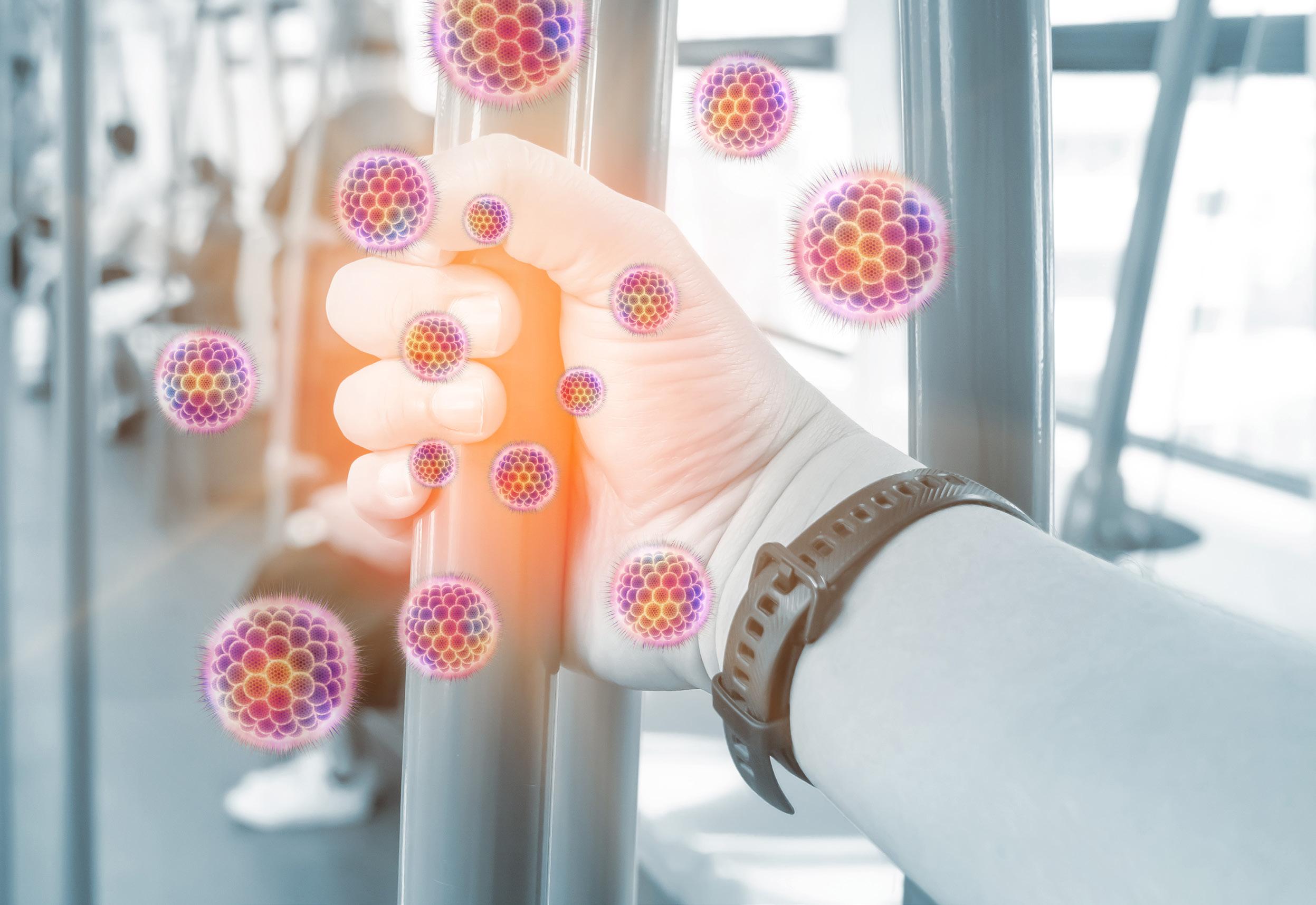
3 minute read
MOD green light for antiviral coating research
Academics at Northumbria have been backed by the Government’s Defence and Security Accelerator (DASA), to develop an antiviral coating suitable for use on everyday surfaces.
DASA, part of the Ministry of Defence, has commissioned a research team from Northumbria’s Department of Applied Sciences to develop a new type of multifunctional antiviral coating which could form part of the UK’s biodefence - crucial to combatting public health crises such as the ongoing COVID-19 pandemic.
In partnership with Defence Science and Technology Laboratory (Dstl), Associate Professor Matt Unthank and his team are working to create a unique low friction coating, also known as a “superhydrophobic” coating, that enables surfaces to destroy viruses while remaining robust and easy-to-clean.
While antiviral coatings are not a new concept, existing approaches can release undesirable chemical compounds into the environment, are not long lasting or are difficult to clean and maintain. This novel coating aims to resolve those issues.
Funding from DASA will enable the researchers to understand whether the coating is universally robust on an array of surfaces and materials. It is hoped that in the future it could be used on high-contact surfaces such as handrails on public transport, hospital trolleys or shop tillpoints, as well as domestically – on door handles or bathroom taps, for example. Such a scientific development is a vital biodefence tool that could help bring down the COVID-19 ‘R’ rate, while allowing more scope for ‘normal’ life to continue.
Dr Matt Unthank, project lead and Associate Professor in Polymer Chemistry, said:
Current popular disinfecting methods such as chemical, bleach or alcohol-based products actively destroy, or deactivate, microorganisms such as bacteria and viruses on contact. However, this approach requires constant retreatment of the surfaces with disinfecting agent which can be labour intensive and impractical.
An alternative approach is to create a permanent or semipermanent surface that destroys virus particles on contact, known as an ‘antiviral’ surface. These fall into two major categories of coatings. The first type is those that slowly release virucidal chemicals from a coated surface into the environment resulting in an antiviral effect, known as ‘controlled release’ biocidal or virucidal coatings. The second category includes creating surfaces that are permanently capable of destroying microorganisms, such as coronavirus, and are known as ‘contact biocidal’ or ‘contact virucidal’ coatings.
Dr Matt Unthank and his team are focussing on developing new multifunctional contact biocidal and virucidal coatings, which are safe, do not release chemicals to the environment and are user friendly and universal in their application.
One disadvantage of all biocidal and virucidal coatings is that surface contamination by dust, debris and dirt can disable its antiviral capabilities overtime. An ideal coating system would be both potent in its antimicrobial properties but also easy-clean or even self-cleaning in nature. This concept is the inspiration for the low friction, or ‘superhydrophobic’ qualities of the coatings under development by researchers at Northumbria - a vision that sets it apart from existing antiviral coating technologies.
Ian Shortman, technical partner and Senior Scientist at Dstl, said:
Andrew Caldwell, Head of DASA, said:
DISCOVER MORE:
www.northumbria.ac.uk/ appliedsciences

